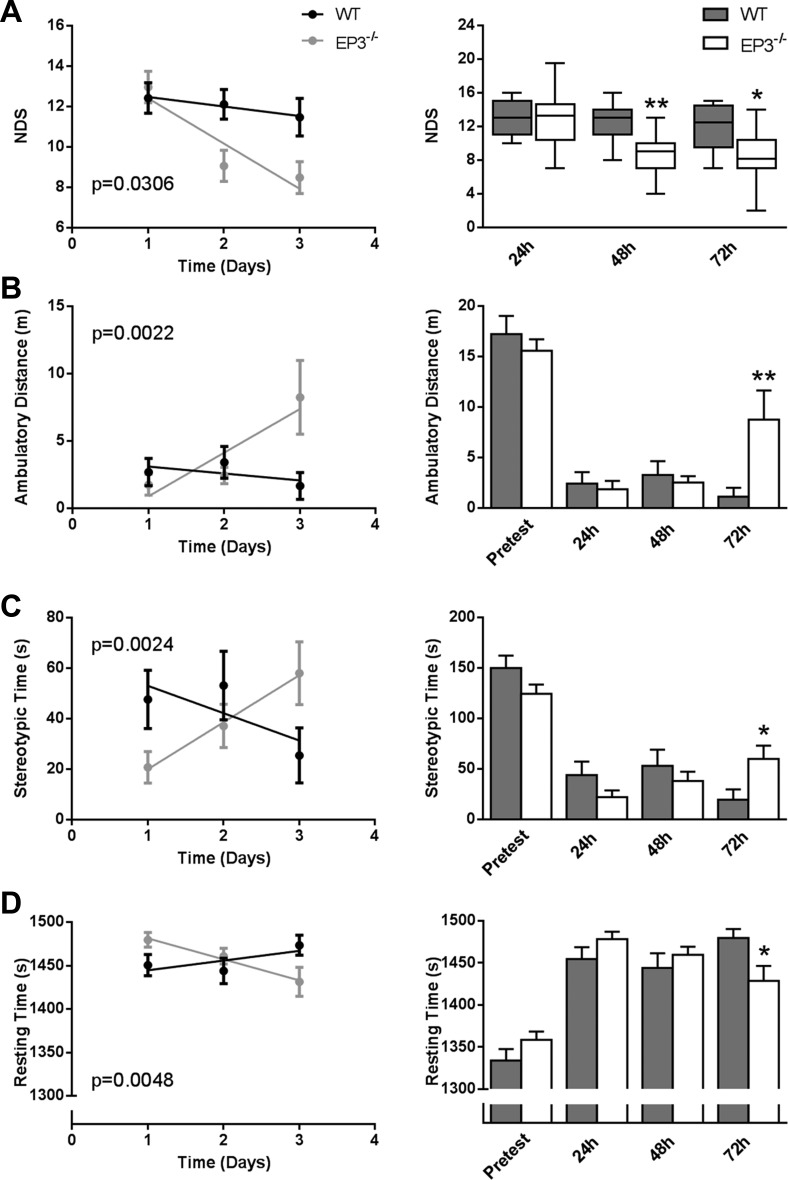Fig. 2.
EP3 receptor deletion improves functional outcomes after ICH. At 24, 48, and 72 h following ICH, investigators blinded to genotype performed neurobehavioral testing to evaluate functional outcomes of WT and EP3−/− mice using 2 separate tests: neurological deficit scoring (NDS) and open field locomotor activity, which consists of stereotypic time, ambulatory distance, and resting time. A: EP3−/− mice displayed a significantly improved rate of recovery in focal neurological deficits (left). EP3−/− mice had significantly better neurological function as identified by lower NDS scores at the 48- and 72-h endpoints (right). B-D, left: EP3−/− mice demonstrated a significantly improved rate of recovery in ambulatory distance (B), stereotypic time (C), and resting time (D). WT and EP3−/− mice had similar locomotor activity at baseline and 24 and 48 h. However, EP3−/− mice perform better on measures of stereotypic time (B), ambulatory distance (C), and resting time (D) at 72 h post-ICH. All comparisons include n = 11 WT and n = 14 EP3−/− mice; *P < 0.05; **P < 0.01.

